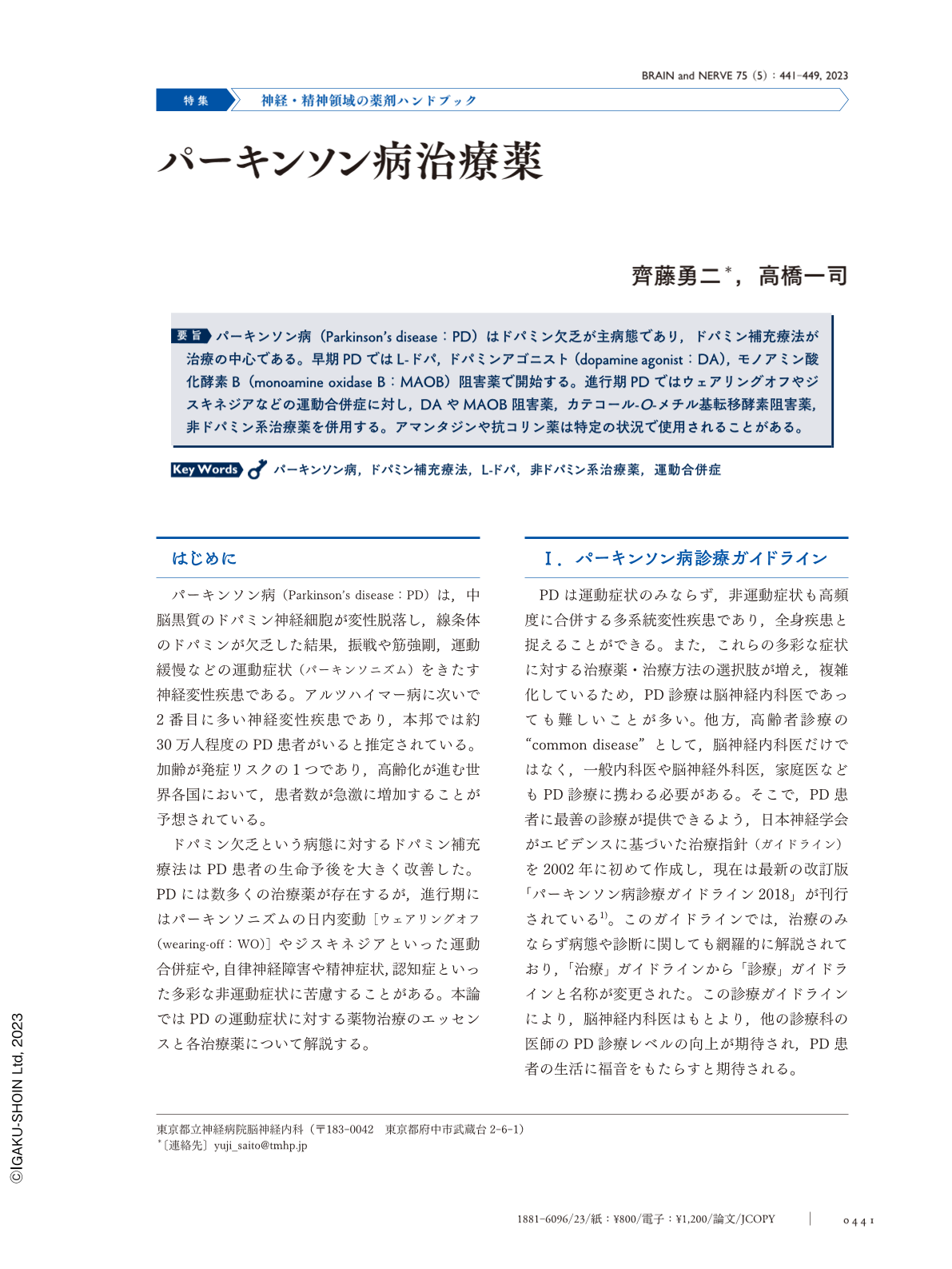Japanese
English
- 有料閲覧
- Abstract 文献概要
- 1ページ目 Look Inside
- 参考文献 Reference
パーキンソン病(Parkinson's disease:PD)はドパミン欠乏が主病態であり,ドパミン補充療法が治療の中心である。早期PDではL-ドパ,ドパミンアゴニスト(dopamine agonist:DA),モノアミン酸化酵素B(monoamine oxidase B:MAOB)阻害薬で開始する。進行期PDではウェアリングオフやジスキネジアなどの運動合併症に対し,DAやMAOB阻害薬,カテコール-O-メチル基転移酵素阻害薬,非ドパミン系治療薬を併用する。アマンタジンや抗コリン薬は特定の状況で使用されることがある。
Abstract
Parkinson's disease (PD) is the second most common neurodegenerative disorder and its global incidence is on the rise. A well-established dopamine replacement therapy for PD is based on dopamine deficiency, primarily due to dopaminergic neuronal loss in the substantia nigra. Current dopaminergic pharmacotherapy for PD consists of levodopa and other dopaminergic drugs, such as a dopamine agonist (DA) and monoamine oxidase B (MAOB) inhibitor, and patients with PD are administered these mainly according to age, disability of parkinsonism, and tolerance of the drugs. In the advanced stage, patients with PD usually experience motor complications, mainly the wearing-off phenomenon and dyskinesias, resulting in disabled activities of daily life. Many pharmacological options are available against motor fluctuations in patients with advanced PD, including long-acting DAs, MAOB inhibitors, and catechol-O-methyltransferase inhibitors, as adjunct alternatives for dopamine-replacement therapy. Non-dopaminergic pharmacological approaches, including zonisamide and istradefylline, which have been mainly developed in Japan, are also available. Amantadine and anticholinergic drugs may be useful in specific situations. Device-aided therapies, such as deep brain stimulation and levodopa-carbidopa intestinal gel infusion therapy, can be performed at the advanced stage. In this article, we provide an overview of recent pharmacological treatments for PD.

Copyright © 2023, Igaku-Shoin Ltd. All rights reserved.


